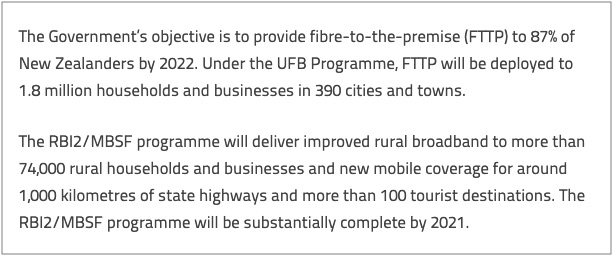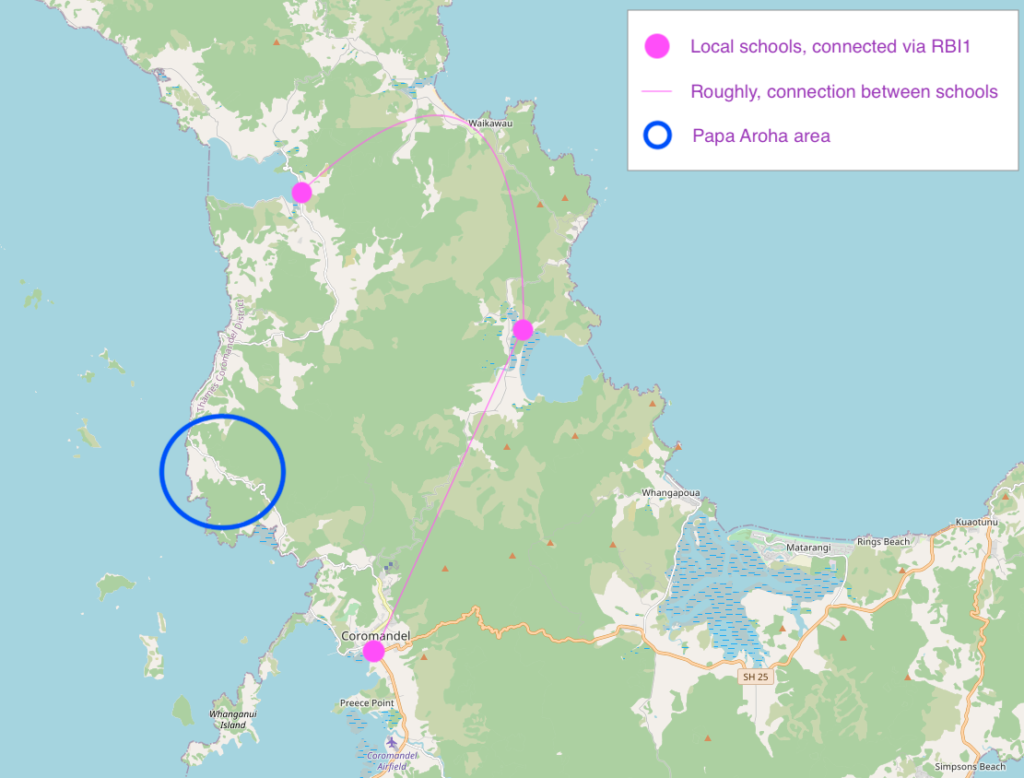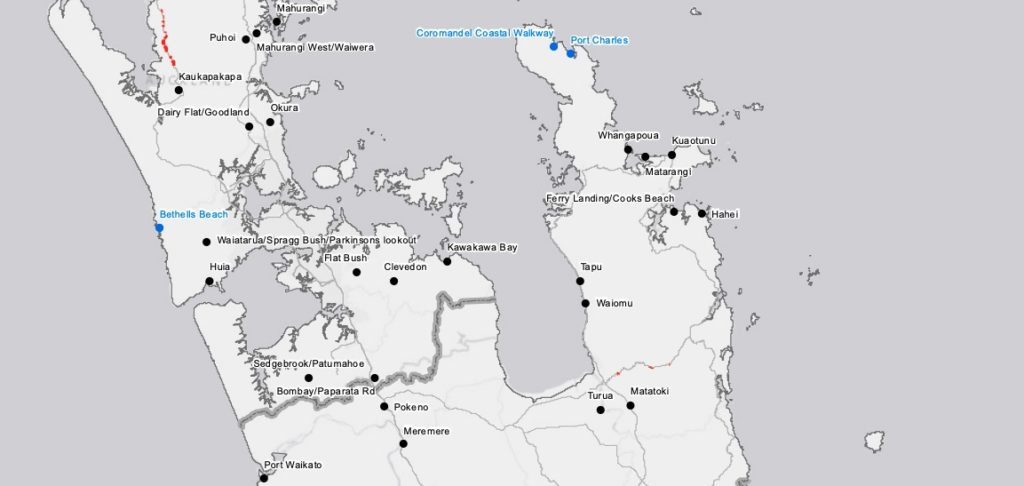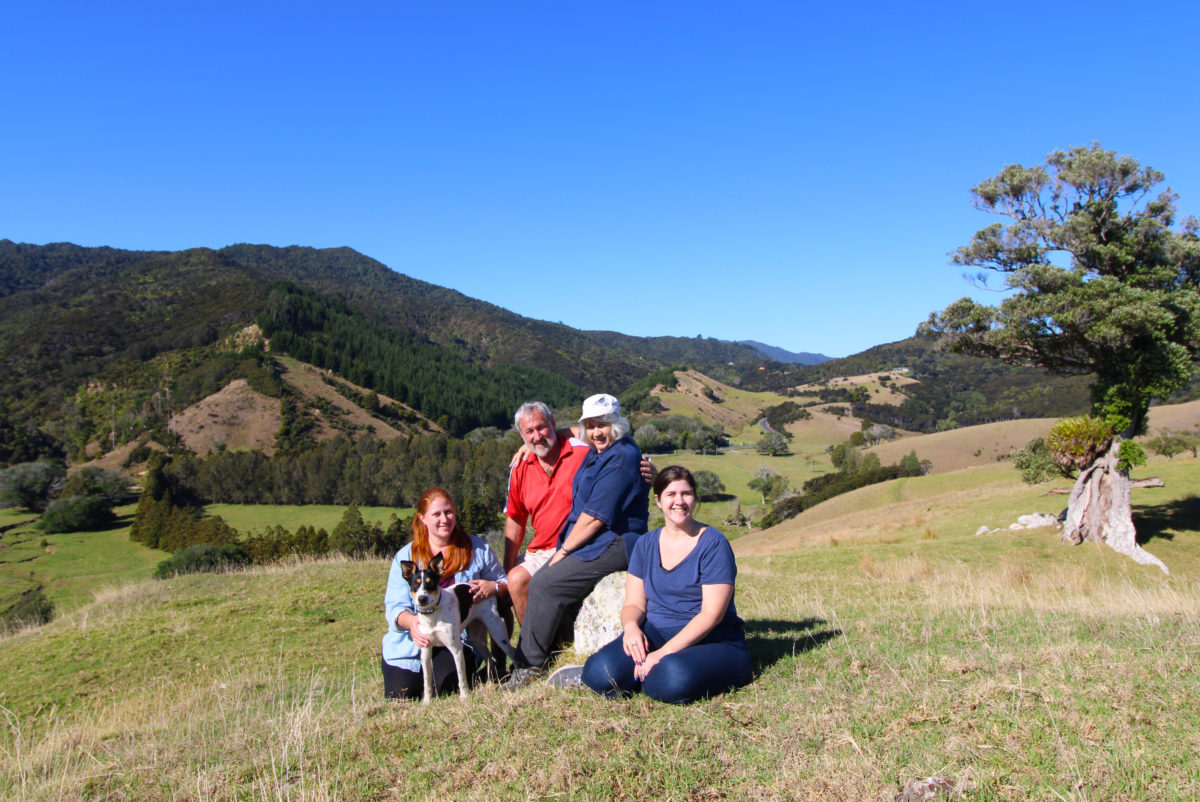Our home was connected to the internet for the first time in 1998, when Dad brought home a Gateway PC and my aunty set up our dial-up connection.
I was ten. I loved messing around with computers, trying things out to see what I could do – even just typing into a basic word processor was exciting. In 1998, our connectivity was on a par with anyone else connected to the internet, and it’s been a race to the bottom of the hill since then.
Ironic, since we live atop a hill with an enviable view across Tikapa Moana (the Hauraki Gulf). I can see the lights of the Sky Tower in Tamaki Makaurau (Auckland) at night, and all the way north to Hauturu (Little Barrier Island) on a good day.

In the new millenium, Telecom (now Spark) extended 3G service out to our area and we were able to buy a gadget with a SIM card which would allow us to create a WiFi network connected to the internet via 3G – which was patchy at best.
20 years after we first connected via dial-up it was still necessary to maintain that connection. Mum runs a small business and needs a reliable connection to respond to her customers. The last time I used dial up was in 2018.
In 2010, under a National Government, Steven Joyce announced the Rural Broadband Initiative, recognising that connectivity is “important” for modern life and endeavouring to improve broadband access for rural New Zealanders. Of course, Aotearoa is “geographically challenging” and so someone would always be left out. The Centre for Public Impact shared some analysis on progress on the RBI in 2016.
Our home is north of Coromandel town, in a tiny settlement called Papa Aroha between Colville in the north (pop. 1,485 2018 census) and historic Coromandel township (pop. 1,743 2018 census) a 15 minute drive south. We aren’t big enough to be reported on as a community ourselves.
In 2011 the RBI objective was to “improve coverage of fast broadband to enable 80% of rural households and businesses to access services of 5Mbps or better, and the remaining 20% to achieve speeds of at least 1Mbps”. And, to “connect 97% of schools to fibre enabling speeds of at least 100Mbps with the remaining remote schools able to achieve speeds of at least 10Mbps”. (Source: P9, from the Commerce Commission). UFB1 was completed early and on budget, according to a statement from Labour Minister Kris Faafoi in November 2019.
As small as our settlement in Papa Aroha is, we have had low expectations of connectivity and have always known we’d fall outside of thresholds for a longer period of time than the rest of the country.
In 2018 (yes, the same year we still listened to our dial-up modem sing the song of connectivity…) Ministers Kris Faafoi and Shane Jones announced the Rural Broadband Initiative Phase Two/Mobile Black Spots Fund to take coverage to 99.8% of the population (source). That excludes just 0.02% of the entire country.
This latest extension is set to be finished in 2022. Crown Fibre Holdings/Crown Infrastructure Partners who manage the 1.7 billion investment to realise the RBI/RBI2/MBSF and UFB (Ultra Fast Broadband) initiatives state fibre-to-the-premise for 87% of New Zealanders by 2022.

On the 29th of April 2020, Minister Kris Faafoi announced further investment in the rural network via the Ultra Fast Broadband Initiative (UFB), which is different to the Rural Broadband Initiative (RBI). Though the coverage maps on the Crown Infrastructure Partners website don’t have any additional coverage in our area.
The best we can currently do is satellite service provided by Gulf Internet. This came about when fed-up local businesses and residents looked at how other remote areas were connected, and found Waiheke Wireless provided by Gulf internet. Land access was provided by locals for a satellite tower to be installed, and those of us with line of sight to the tower signed up. On a good day, we can get connection speeds around 15-18Mbps down and up.
Gulf Internet do their best, but since I’ve relocated to Papa Aroha from the city during the COVID-19 response, I’ve been experiencing first-hand unexpected days without any connection whatsoever, and unexpected drops of connection during work calls and during anything else we might be doing.
When we struggle, calls to our provider are answered but not always followed up. We apologise to our employers or clients, cross our fingers and hope, or take a drive with our cellphones to find 4G reception and hotspot our laptops.
We are grateful for the efforts of Gulf Internet and some kind people there, especially during the current pressures, but we should have been elevated from this situation years ago with the improvement of national infrastructure circa 2011 – not necessarily via fibre, but it should not have fallen on locals to instigate a satellite tower.
The local schools in Coromandel, Harataunga (Kennedy Bay), and Colville were all connected as part of the first cut at the RBI, with the fibre laid not being linked back to Coromandel through Papa Aroha which would service our community.

RBI2 new coverage maps from Crown Infrastructure Partners show new connections nearest to us in Whangapoua (about 30km away), Kuaotunu, and Matarangi (all between Coromandel and Whitianga), and north of us, two tourism locations: Coromandel Coastal Walkway and Port Charles.
At this point, Papa Aroha residents (who are also business owners) and visitors to our area are all deemed less of a priority for stable connectivity than being able to connect while taking a scenic walk.

Of course, the tourism industry is essential to the economy of Coromandel as our largest industry with 16.6% of GDP in 2019, and I love a good travel pic on Instagram as much as the next millenial. It would just be great to be able to access that reliably from home at the same standard as the rest of the country and its manuhiri (guests), if not the rest of the world.
Since COVID-19 is set to choke the tourism industry for international guests at least, reliable connectivity is essential for economic development (and social development, and so much else) in all areas of our country. This is not a piece on why the internet is important, but on our own experiences trying to be reliably connected in our rural area. There seem to be many other rural New Zealanders with a similar tale.
Internet NZ are seizing the example of the impact of the COVID-19 pandemic on New Zealanders with regard to internet access, to highlight the importance of digital inclusion.
Their five point plan for digital inclusion covers more than just the infrastructure limitations that my family experiences, it takes the necessary steps to consider the education, devices and financial support that are also real current barriers to people in Aotearoa getting online. We will be adding our business names in support of their plan, please add yours.
With the most recent announcement of further investment, perhaps our community might finally be considered for infrastructure, but it looks like we are set to be part of the 0.02% of New Zealanders left in the “too hard” kete.
If you’re reading from a stable connection, take a moment to appreciate it and know that too many fellow Kiwi’s don’t yet enjoy that same privilege.
